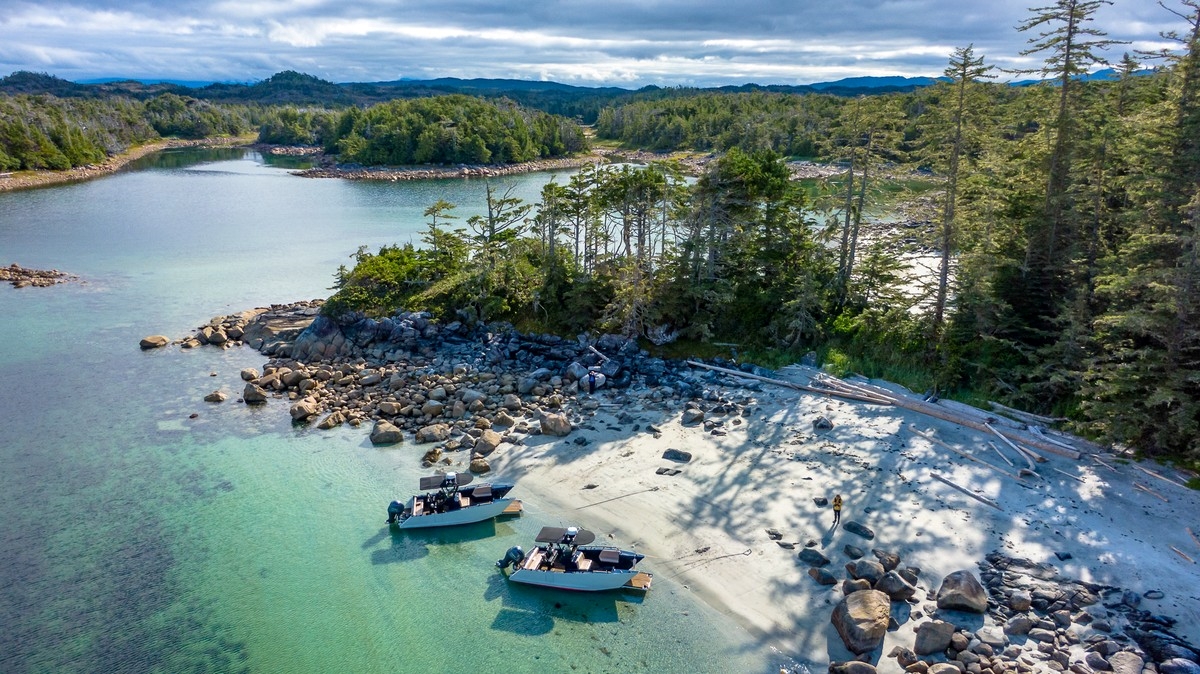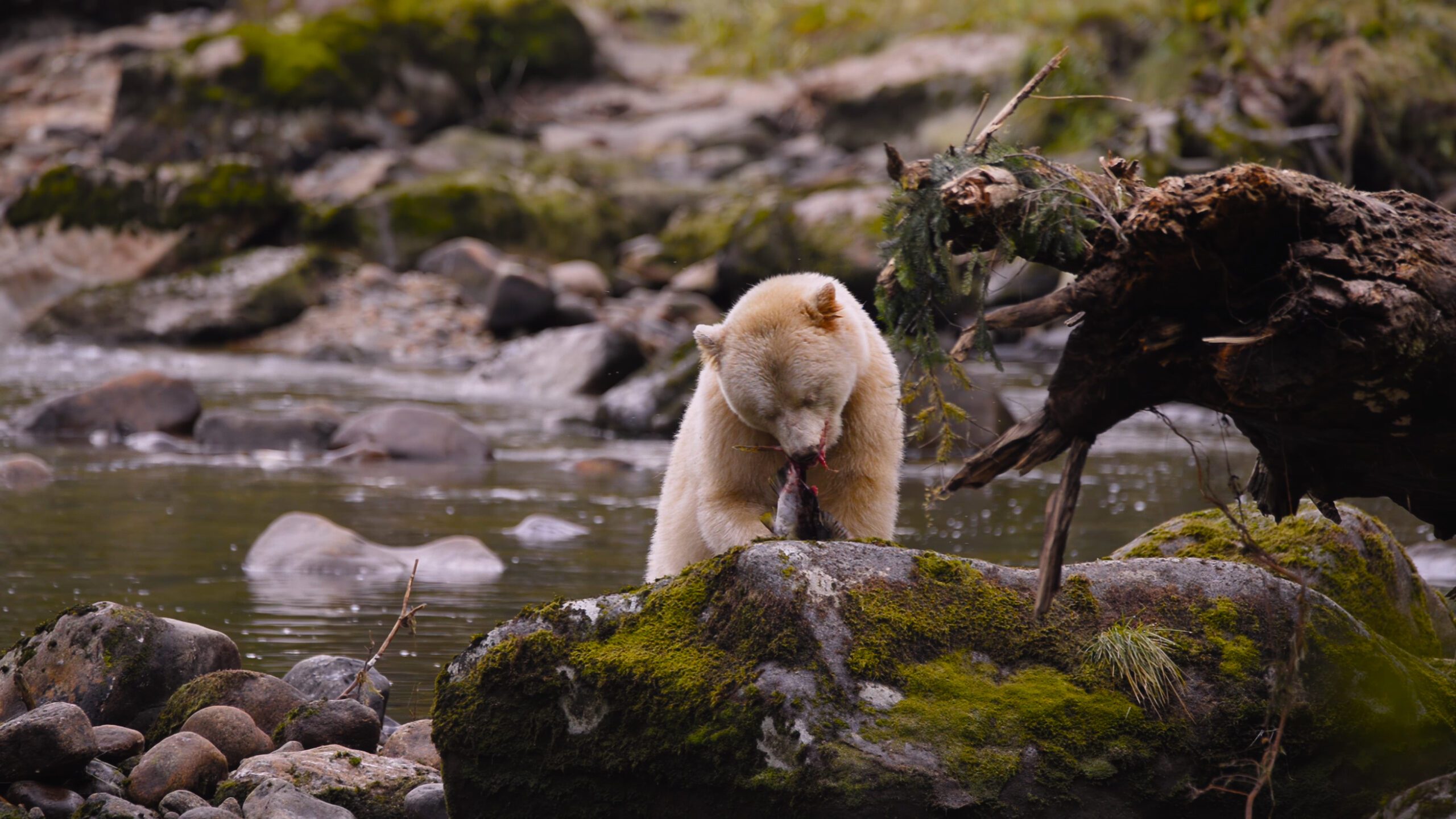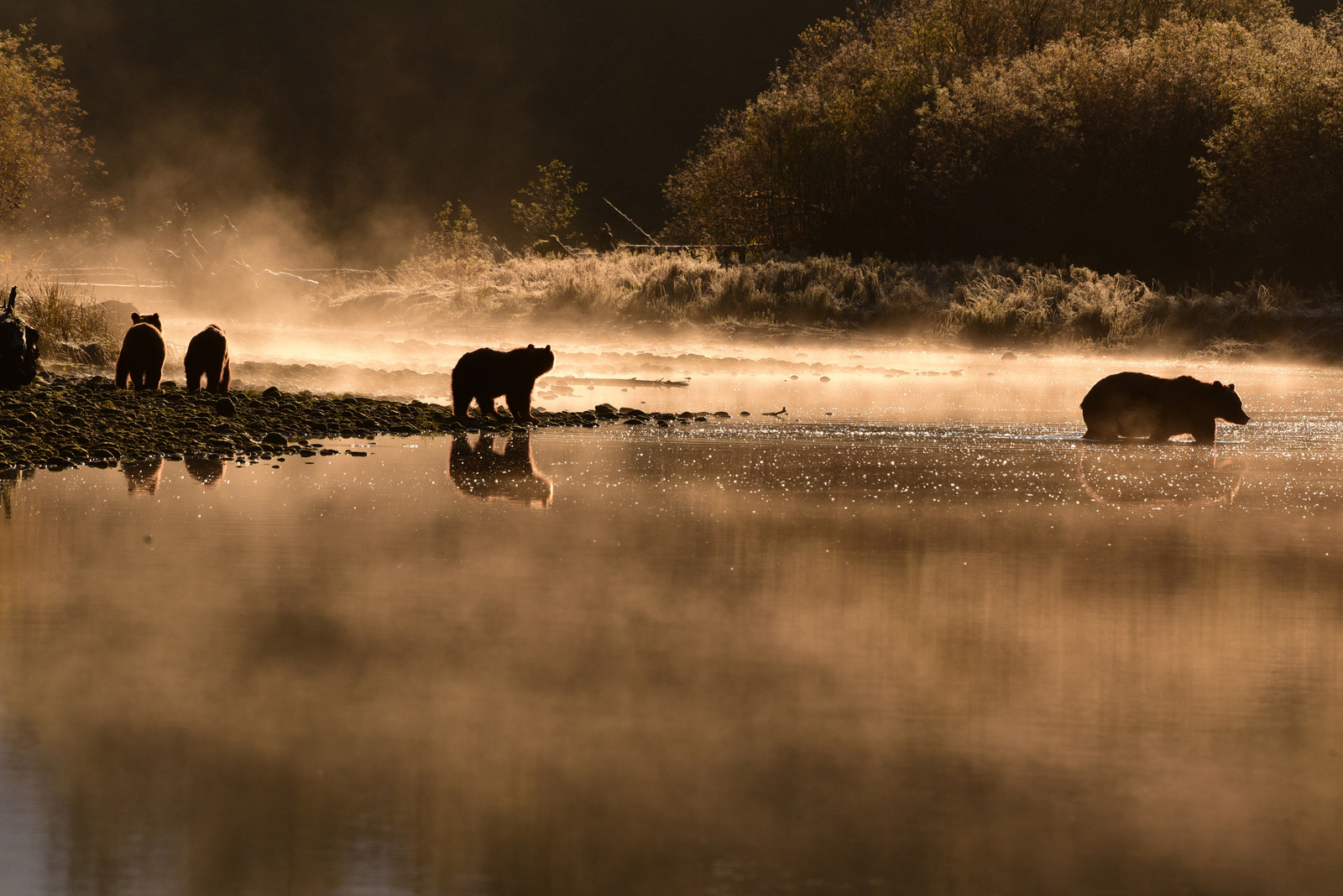Ursula channel, between Gribbel Island and mainland North America (Great Bear Rainforest) Monday, June 23, 2014, 9:22 am
By: Maureen Gordon
Mist rises from cedars and spruce on the hillsides, and an inky sea mirrors the blue-white sky and mountain rock faces. In this watery “valley”, the SV Maple Leaf is the only ship to glide through the mirror.
Our guests, captain Kevin, and special guest naturalists Robert Bateman and Birgit Freybe Bateman linger in the galley after breakfast over coffee and stories. Our destination this morning is Hartley Bay, a small Gitga’at community tucked into a fold in the Great Bear Rainforest’s undulating coastline.
Yesterday morning, anchored in one of the coast’s most spectacular inlets, we zodiaced up the river, past a meadow of Lyngby’s sedge, lupins, paintbrush, buttercups and northern rice root. At a bank, next to the foot of a two thousand foot high mountainside, we met with the Kitasoo-Xai’Xais bear research team, who are working with Raincoast Conservation Foundation’s scientists to study the region’s bear population.
Near us, a mother grizzly bear carefully watches her triplet cubs. We move to a better viewing area after our chat with the researchers. A mother of three little grizzlies has to be extremely cautious – one cub exploring too far from cover and from mum’s side is an easy target for a predatory male bear. Last night, we had a short viewing of this group of four before the mother shooed her cubs up the mountainside to cover.
This morning, however, she rewards us with her trust. As her cubs climb and slide off fallen trees, dig in them for bugs and bat at each other, she is more concerned with keeping a watch out up river for the threat of a male bear.
She is a mother bear we know from previous years. Maybe she recognizes us. Maybe she just recognizes the opportunity that eco-tourists provide: a bit more safety for her cubs since the big males prefer not to be too close to us humans. As we sit for hours, taking thousands of photographs, she slowly moves herself and her cubs closer to us, eating sedges all the while.
She must eat these protein-rich sedges morning ’til night, to get enough sustenance for herself, and calories to produce milk for three active cubs. They are little bears, born this January in the den. The cubs of course provide a variety show of entertainment. In between mouthfuls of sedge, they climb everything in the vicinity, stand on their hind legs to look at us in the same way we are looking at them.
When we finally say goodbye and float downstream, we notice the mother bear shoos the cubs back toward the forest’s edge.
We cruise up Princess Royal Channel, the main line of the Inside Passage, before turning off it into a side channel. At the end of this channel: natural hot springs. A pre-dinner soak under the cedars is pure bliss before dinner.



